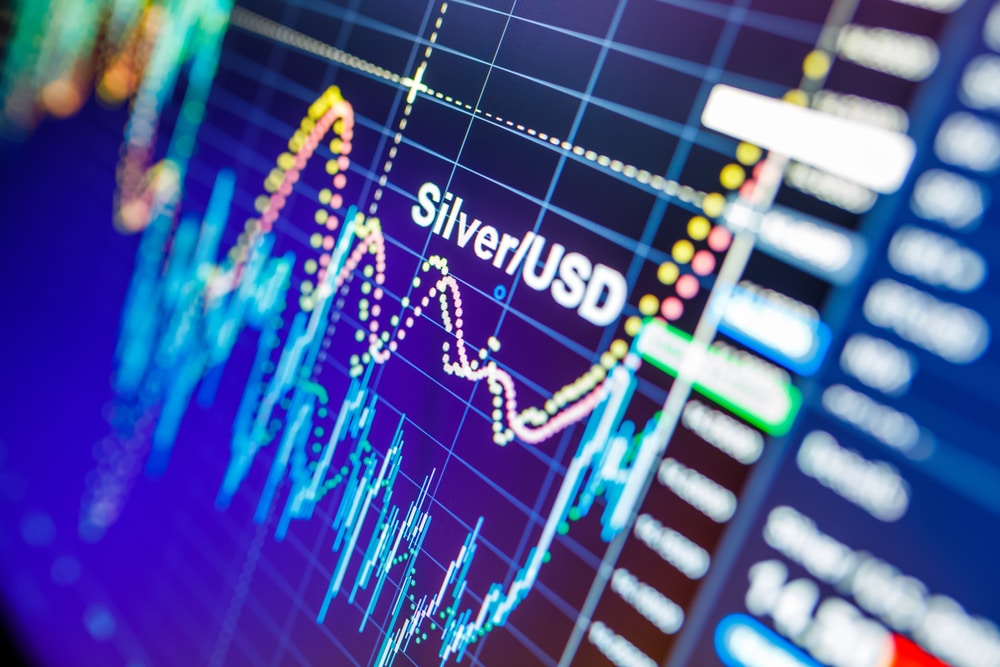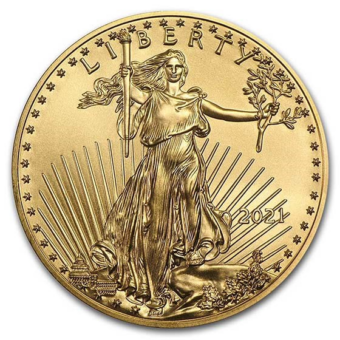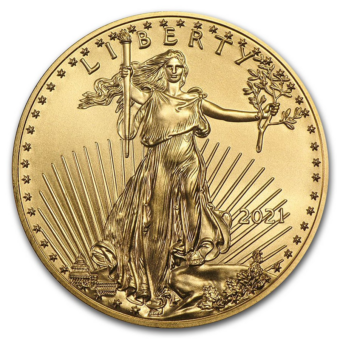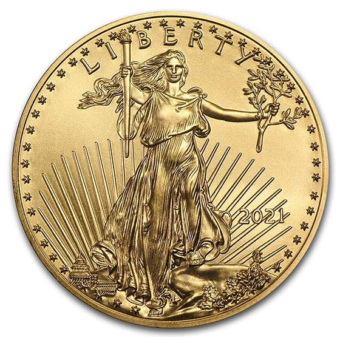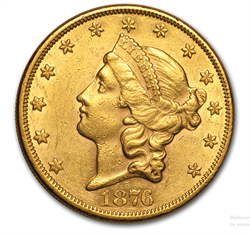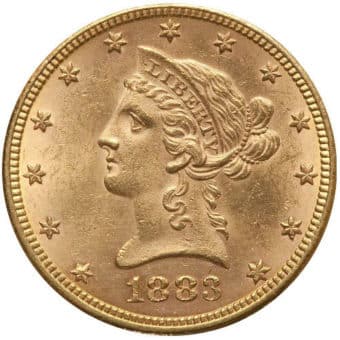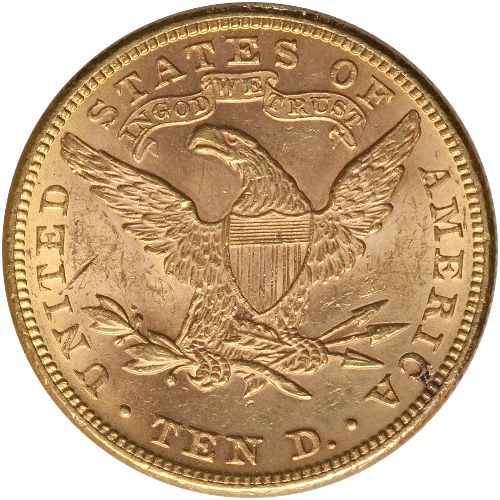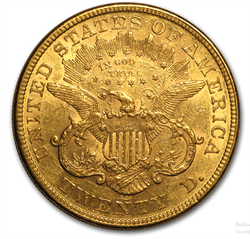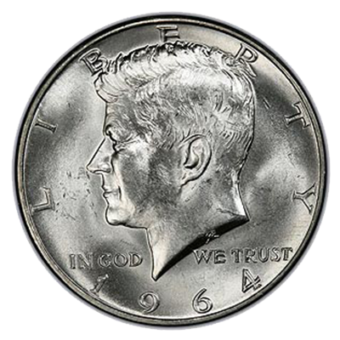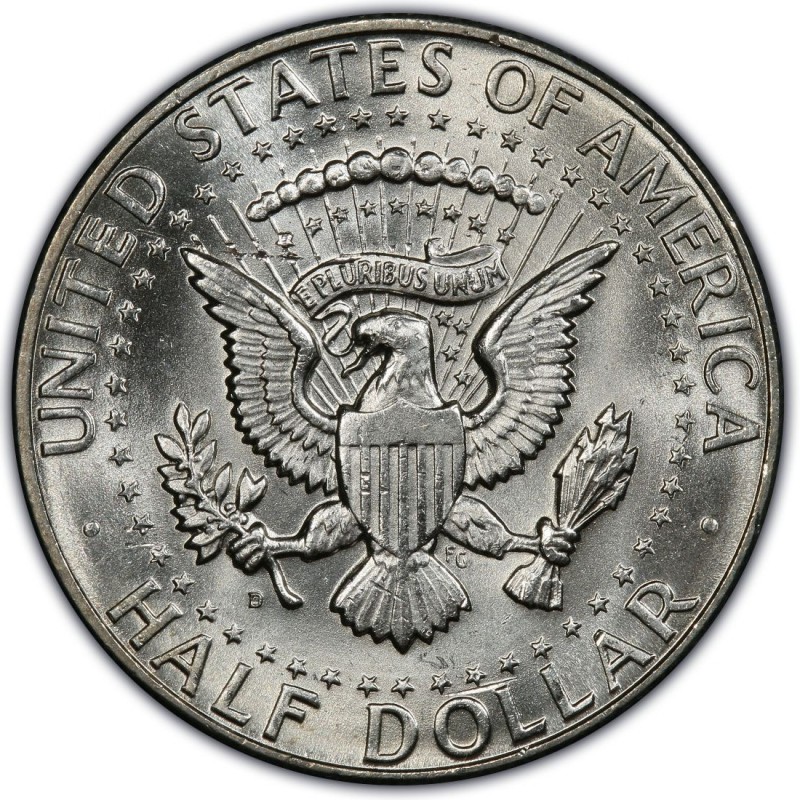A Daily Journey Through the Week's Market
Monday - 2.12.24: Gold prices experienced a slight decline in early trading due to unexpected deflation news from China. Gold is trading at $2027.74, down $6.78, while silver is at $22.57, down 1 cent. The rapid decline in Chinese export prices, the fastest since the 2008 financial crisis, suggests potential deflationary pressures globally, impacting emerging markets closely tied to Chinese trade and potentially prompting central banks to consider interest rate cuts. This situation raises concerns over unfair competition for Western manufacturers and prompts strategic reassessment of reliance on Chinese imports amidst potential trade protectionism.
Tuesday - 2.13.24: Gold prices fell into negative territory Tuesday morning, reacting to hotter-than-expected U.S. inflation data reported by the Bureau of Labor Statistics. January's Consumer Price Index (CPI) rose by 0.3%, surpassing December's 0.2% and expectations of a 0.2% increase, with annual inflation hitting 3.1%, above the forecasted 2.9%. Additionally, core CPI, excluding food and energy, climbed 0.4% last month, maintaining a 3.9% rise over the past 12 months, which also exceeded the anticipated 3.7%, signaling persistent inflationary pressures within the economy. Consequently, April gold futures dropped to $2,028.70 an ounce, down 0.19%.
Wednesday - 2.14.24: Gold and silver prices dropped to $2000.63 (down $19.42) and $22.30 (down 40 cents), respectively, casting doubts on potential Federal Reserve rate cuts due to persistent core CPI. VBL from GoldFix highlights the U.S. economy's vulnerability from depending on external financing via U.S. Treasuries to support its standard of living, suggesting the nationalization of foreign-held debt and promoting alternatives to attract foreign investment for economic stability. Additionally, several analysts point out the U.S.'s significant capital accounts deficit, attributed to a structural trade deficit and excessive spending, indicating a lifestyle beyond its means amidst diminishing global interest in U.S. Treasuries, driven by geopolitical tensions and domestic investment needs.
Thursday - 2.15.24: Gold and silver prices saw a modest increase in early U.S. trading Thursday, staging a mild recovery from recent losses, despite ongoing caution among investors following a higher-than-expected U.S. consumer price index report. This comes amid mixed global stock market performances and anticipation for the U.S. producer price index report due Friday, expected to show a slight increase. The U.S. dollar weakened slightly, while crude oil prices dropped, amid a backdrop of mixed economic data releases including jobless claims and various business and manufacturing surveys, setting the stage for a closely watched day in financial markets.
Friday- 2.16.24: Despite facing pressure, the gold market maintains support above $2,000 an ounce, reflecting steady U.S. consumer sentiment near multi-year highs. The University of Michigan's preliminary consumer sentiment index for February slightly rose to 79.6, indicating ongoing consumer confidence in the economy, attributed to reduced inflation and a strong labor market. Inflation expectations remain stable, with consumers anticipating a 3% increase over the next year, closely aligning with previous months' forecasts. Meanwhile, gold prices slightly declined to $2,010.90 an ounce, showing minimal reaction to the economic indicators.
Gold Prices Dip Amid Rising U.S. Inflation Pressures
In January, gold prices experienced a slight decline, testing support levels just above $2,000 an ounce, due to increased inflation pressures highlighted by a higher-than-expected rise in the U.S. Producer Price Index (PPI). The PPI rose 0.3%, surpassing economist predictions of a 0.1% increase, signaling persistent inflationary pressures within the economy. Core PPI, excluding food and energy, saw a significant rise of 0.5%, indicating that companies might pass on these higher costs to consumers. This inflation data has led to a shift in market expectations, pushing back the timeline for potential Federal Reserve rate cuts, with a March cut appearing unlikely and a May cut seen as less than 30% probable. Despite this, analysts believe gold will remain resilient due to central bank demand, even as the Federal Reserve's strict monetary policy, aimed at combating inflation, continues to impact the market.
Inflation's Stubborn Grip Tightens Despite Fed Efforts
In January, inflation exceeded expectations, challenging both consumers and the Federal Reserve's strategies to stabilize prices. The consumer price index (CPI) rose by 0.3% for the month, translating to an annual increase of 3.1%, primarily driven by soaring shelter costs, which rose by 0.6%, contributing significantly to the overall inflation surge. Despite a drop in December's year-on-year rate from 3.4% to 3.1%, the figures still surpassed economists' forecasts, which anticipated a milder monthly and annual rise. Core CPI, excluding food and energy, also accelerated beyond expectations, indicating a 3.9% rise from a year ago, highlighting the persistent nature of inflation despite slight improvements in certain areas like energy, where a 0.9% decrease was observed due to lower gasoline prices. The stock market reacted negatively to the news, with futures falling sharply, underlining the broader economic concerns. This inflation report underscores the challenges facing the Fed as it aims to navigate monetary policy amidst pressures for rate cuts, with shelter prices, in particular, posing a continued obstacle to achieving the central bank's 2% annual inflation target.
Undervalued and Overlooked: Silver's Path to Shattering $30
Recent research on the physical silver market points to a significant supply deficit, suggesting that silver prices could reach $30 in 2024, a target that seems conservative given the circumstances. The Silver Institute's report forecasts robust global silver demand, particularly from industrial fabrication and recovery in jewelry and silverware, against a backdrop of only a slight increase in supply. Despite the bullish indicators and a historical undervaluation of silver relative to gold, the silver market lacks momentum, with prices remaining flat for the past 3.5 years. Analysts argue that silver is grossly undervalued, especially when compared to other commodities that have surpassed their 2008-2012 peaks, while silver remains more than 50% below its 2011 high amidst a supply shortage. The gold to silver price ratio further underscores silver's undervaluation, suggesting explosive potential for silver prices beyond the conservative $30 target, potentially reaching $50. However, current market dynamics favor AI & Robotics stocks, leaving commodities like silver waiting in the wings for their moment to shine, indicating a future market rotation could ignite silver's latent potential.
Gold Tumbles as Unexpected CPI Data Strengthens Dollar
Following the release of January's consumer price index (CPI) by the U.S. Bureau of Labor Statistics, which indicated a 0.3 percent increase, surpassing December's rise and economists' expectations, gold prices experienced a significant drop. The report highlighted a 0.6% increase in shelter costs as the main driver of inflation, contributing to two-thirds of the overall monthly increase, while food prices also rose by 0.4%. In contrast, energy prices saw a decrease of 0.9%, mainly due to lower gasoline costs. This unexpected inflation surge has impacted the Federal Reserve's interest rate decisions, diminishing the likelihood of an early rate cut, previously anticipated by March, and suggesting a possible delay until May or June. The inflation data drove U.S. Treasury yields up and strengthened the dollar, leading to a 1.64% decline in April gold futures, with both dollar strength and market sentiment contributing to gold's sharp $33 price drop.
Mexico's Proposed Ban on Open-Pit Mining Could Boost Silver Prices
Mexican President Andrés Manuel López Obrador (AMLO) has put forward a proposal to parliament for constitutional reforms that include banning open-pit mining operations. This move, aimed at modifying Article 27, seeks to prohibit the granting of new concessions for open-pit mining due to its severe environmental impact and excessive water usage, which the President argues infringes on human rights by compromising healthy environments and public health. Notably, the proposal does not affect underground mining activities. Given Mexico's significant role in the global mining industry, housing 264 surface mines primarily in regions like Chihuahua and Zacatecas, this proposed ban targets major operations including those by Grupo Mexico and Newmont Goldcorp. This legislative push continues AMLO's trend since 2018 of halting new mining concessions, further intensifying the investment uncertainty within the country's mining sector. This proposal, if enacted, could significantly impact silver production, potentially leading to higher silver prices due to constrained supply, considering Mexico's status as a top silver producer with many of its largest mines operating via open-pit methods.
BRICS: Steering Towards a New Global Balance
In a bold move, Russian President Vladimir Putin, along with BRICS, an influential bloc comprising Brazil, Russia, India, China, South Africa, and new members Egypt, Ethiopia, Iran, Saudi Arabia, and the United Arab Emirates, is pushing for a shift in the global order away from Western dominance. This initiative, as outlined by Russia's envoy to the United States, Anatoly Antonov, marks 2024 as a pivotal year in Russian foreign policy, challenging attempts at international isolation with a drive towards genuine multipolarity. Despite the unique challenges faced by Moscow, the expansion of BRICS underscores a collective effort to foster independent foreign policy courses among nations, free from external dictation. The group's commitment to reducing the U.S. dollar's dominance in world trade through the BRICS New Development Bank and other financial instruments reflects a concerted effort to create a more equitable global financial system. This reorientation towards a new world order, emphasizing sovereign equality and mutual interests, signals a significant realignment in international relations, potentially diminishing the unilateral influence of Western powers.
Druckenmiller's Strategic Pivot to Gold Amid Tech Divestment
In a notable shift within the investment landscape, billionaire investor Stanley Druckenmiller, through his Duquesne Family Office, has adjusted his portfolio away from major tech giants such as Alphabet, Alibaba, and Amazon, opting instead for a strategic investment in the precious metals sector. This move comes at a time when the gold market and mining equities have been languishing, largely ignored by investors. Druckenmiller's acquisition of significant stakes in the world’s two largest gold producers, Barrick Gold and Newmont Mining, alongside an increased investment in Teck Resources, signals a renewed interest in the mining sector. This pivot draws attention back to the gold industry, which has seen its equities underperform despite the metal's price holding near $2,000 an ounce, amidst a backdrop of strong central bank demand, financial market uncertainties, and geopolitical tensions. Analysts remain optimistic about the sector's potential, especially if the Federal Reserve shifts towards interest rate cuts and a new easing cycle, which could enhance the performance of mining companies relative to the precious metal itself.
Next Week’s Key Events
Monday, Feb. 19
None scheduled, President's Day holiday
Tuesday, Feb. 20
● 10:00 am: U.S. Leading Economic Indicators (Jan)
Wednesday, Feb. 21
● 2:00 pm: Minutes of Fed's January FOMC meeting
Thursday, Feb. 22
● 8:30 am: Initial Jobless Claims (Feb. 17)
● 9:45 am: S&P Flash U.S. Services PMI (Feb)
● 9:45 am: S&P Flash U.S. Manufacturing PMI (Feb)
● 10:00 am: Existing Home Sales (Jan)
Friday, Feb. 23
None scheduled
IMPACT ON GOLD AND SILVER MARKETS:
U.S. Leading Economic Indicators (Jan):
This composite of economic indicators is used to predict future economic activity. A higher-than-expected reading suggests stronger economic growth, which could boost investor confidence and reduce demand for safe-haven assets like gold and silver. Conversely, a lower-than-expected reading could signal economic slowdowns, potentially increasing demand for gold and silver as safe havens.
Minutes of Fed's January FOMC meeting:
The minutes provide insights into the Federal Reserve's monetary policy outlook, including interest rate decisions and views on economic conditions. Hawkish tones, suggesting potential rate hikes, could strengthen the USD, pressuring gold and silver prices as they become more expensive for holders of other currencies. Dovish tones, indicating a cautious or accommodative stance, could weaken the USD, supporting higher gold and silver prices as they become more attractive investments compared to yield-bearing assets.
Initial Jobless Claims (Feb. 17):
This report measures the number of individuals who filed for unemployment insurance for the first time. Rising claims indicate weakening labor market conditions, potentially boosting gold and silver as safe havens. Lower-than-expected claims suggest a strong job market, which could lead to higher consumer spending and economic growth, potentially dampening demand for gold and silver.
S&P Flash U.S. Services PMI (Feb):
The Purchasing Managers' Index (PMI) for services measures the activity level of purchasing managers in the services sector. A figure above 50 indicates expansion, which could signal economic strength and reduce demand for safe havens like gold and silver. A reading below 50 suggests contraction, potentially increasing demand for these precious metals.
S&P Flash U.S. Manufacturing PMI (Feb):
Similar to the services PMI, this report measures the health of the manufacturing sector. An expansionary reading could decrease demand for gold and silver, while a contractionary reading could enhance their appeal as protective investments during economic uncertainty.
Existing Home Sales (Jan):
This report indicates the health of the U.S. housing market. Strong home sales suggest economic strength and consumer confidence, potentially reducing the need for safe-haven assets. Weak home sales data could signal economic trouble, possibly increasing the attractiveness of gold and silver as investment havens.


